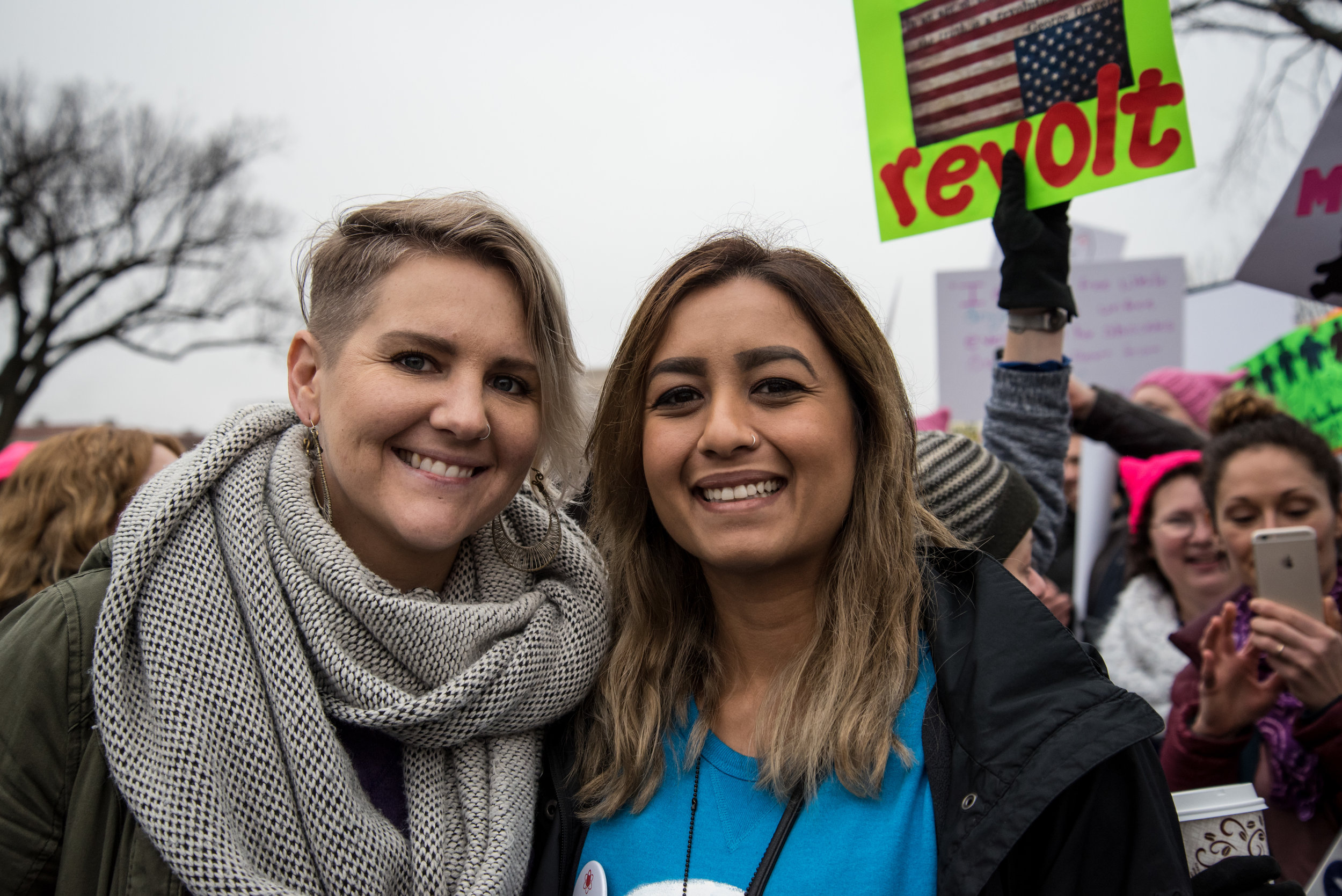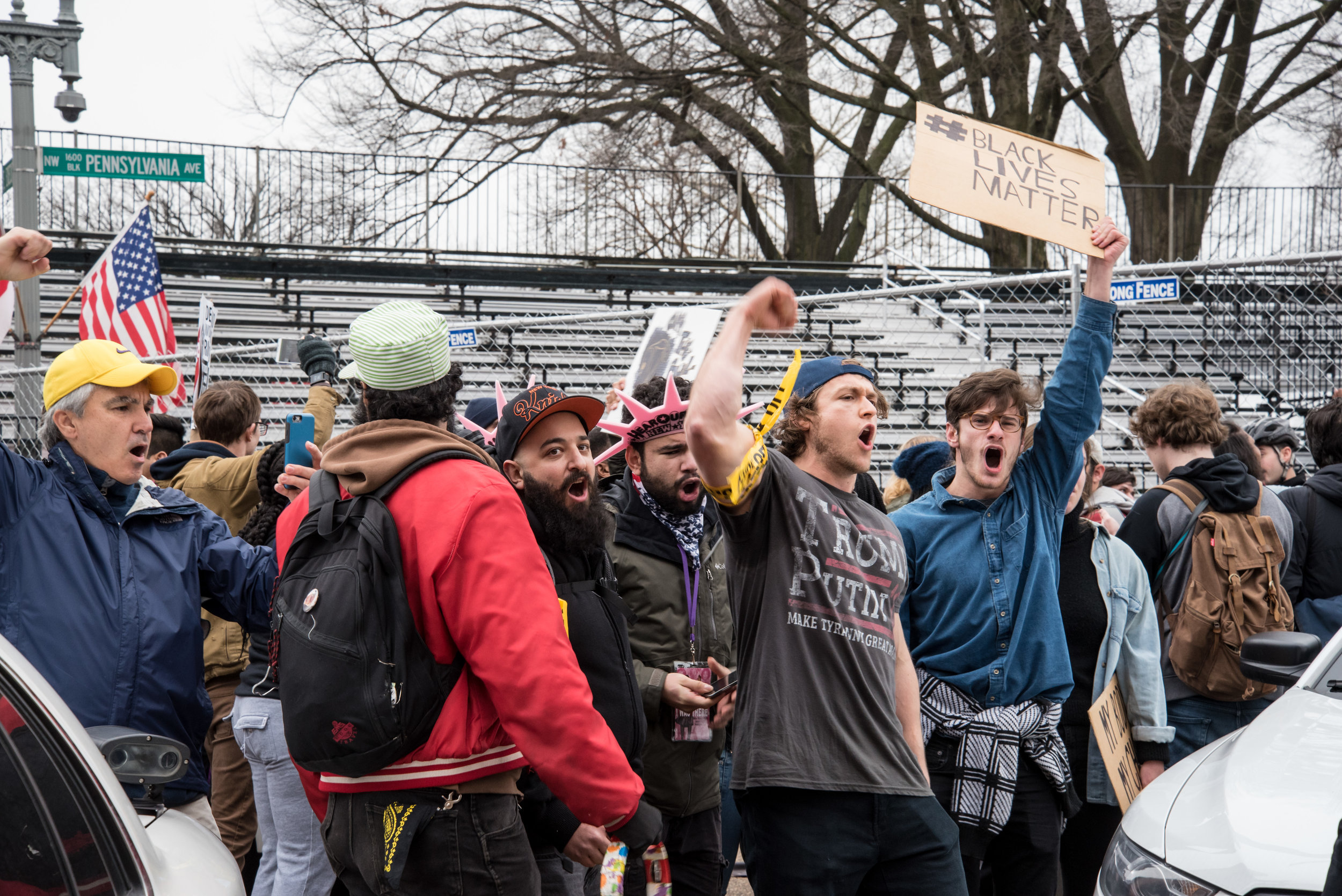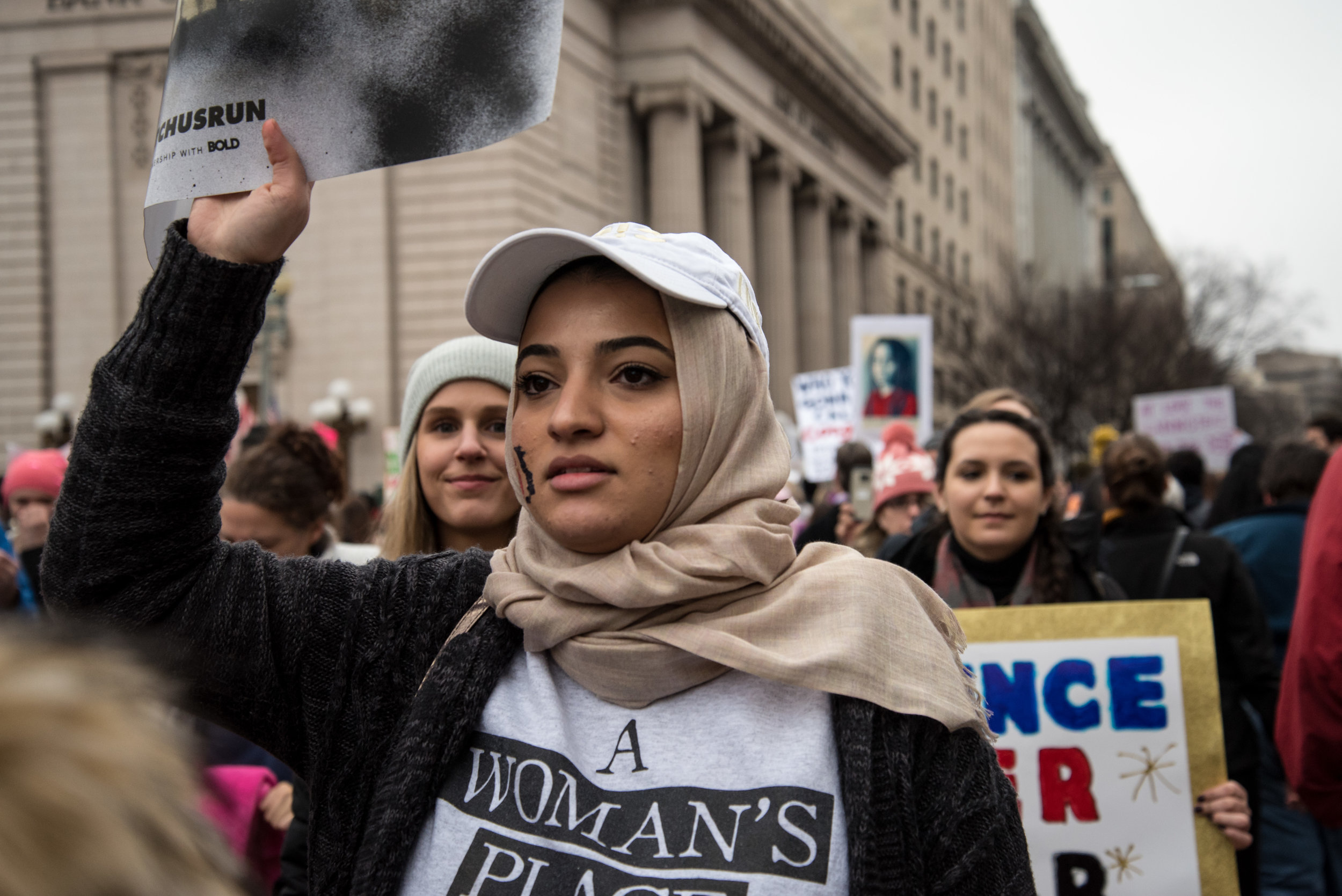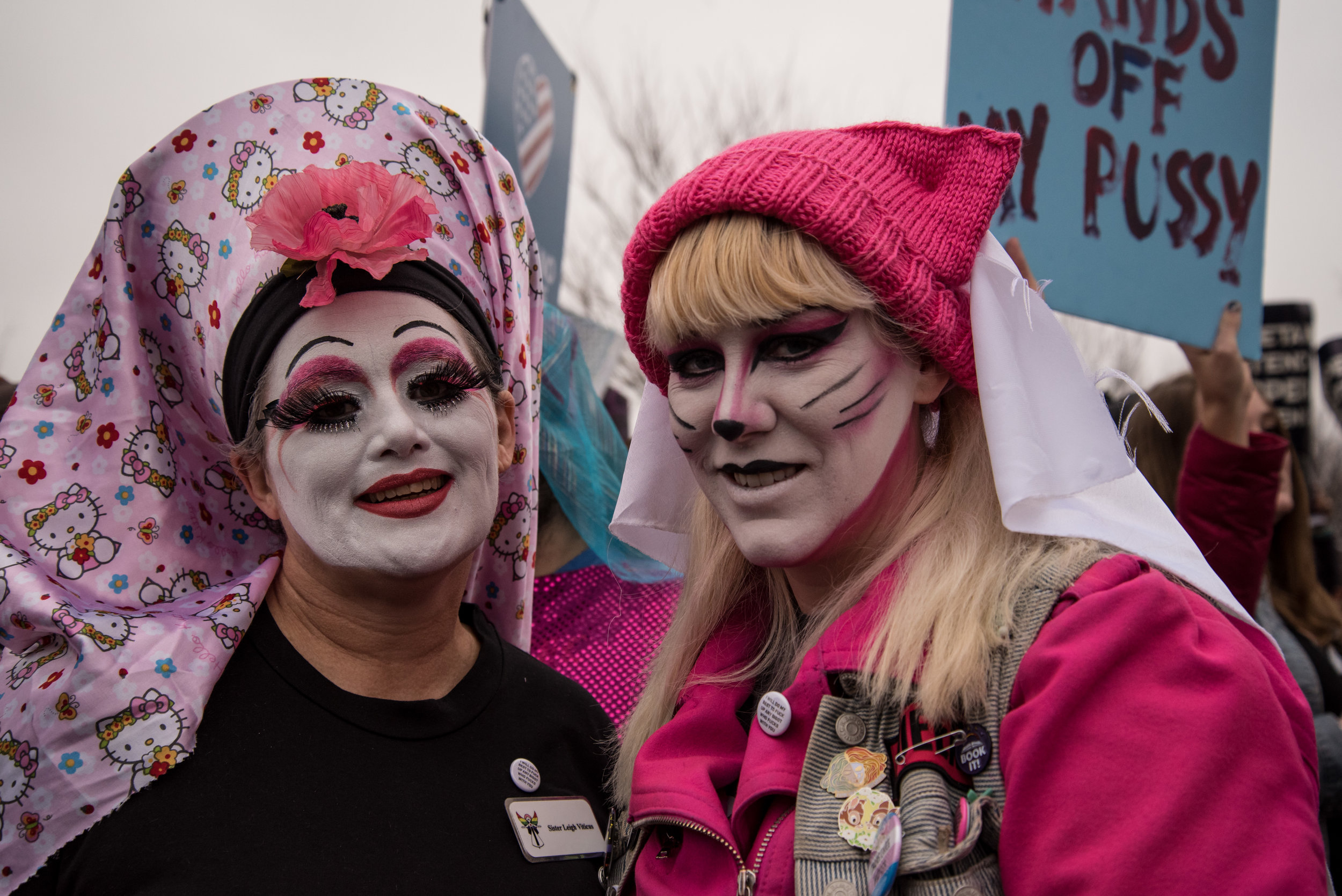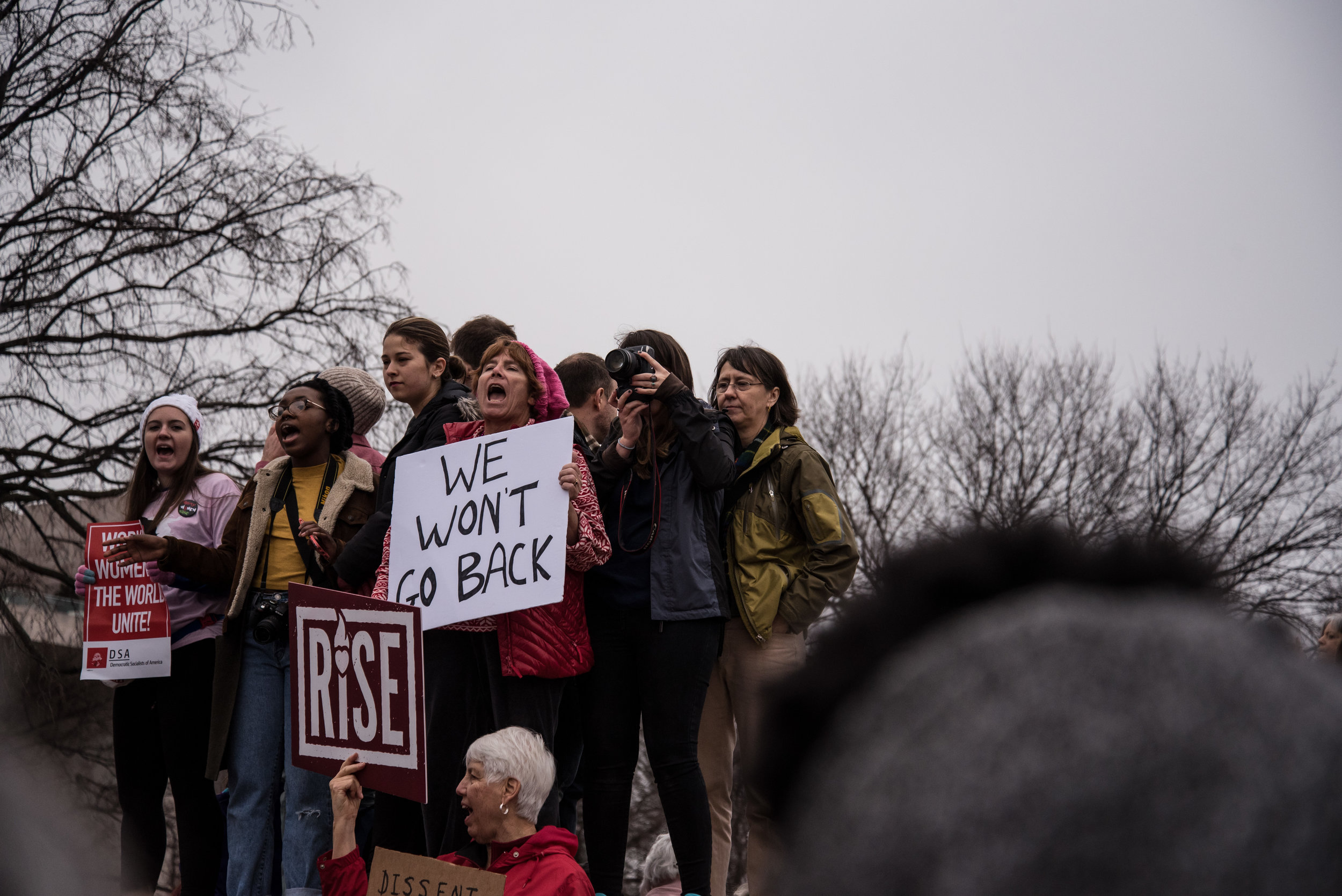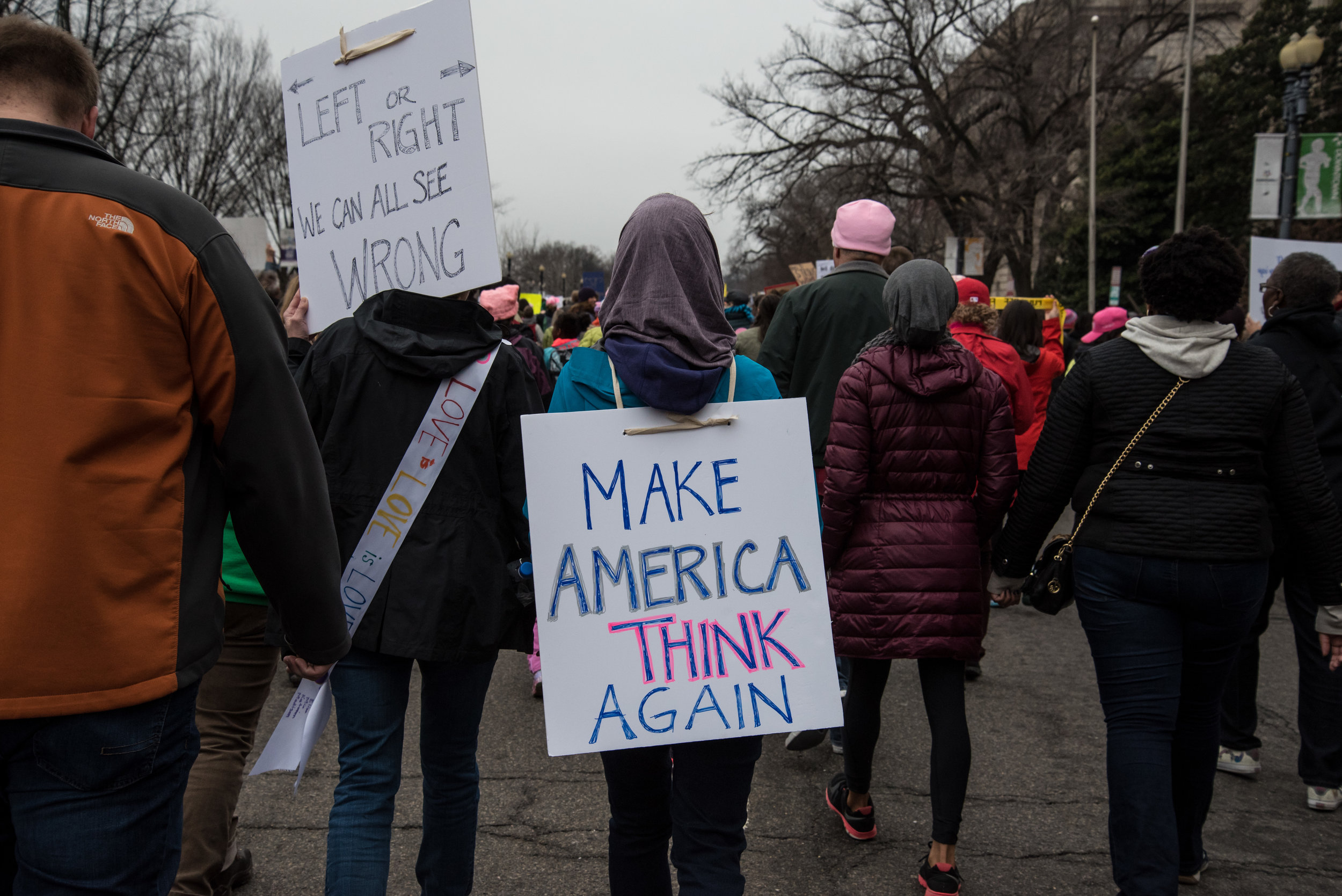A few days after polls closed in the 2016 presidential election, I went on Etsy and ordered t-shirts emblazoned with the words "the future is female" for myself and all of my girlfriends. It felt as though no one had taken the blow of Trump's victory harder than the women who had supported Hillary—mothers who wanted their daughters to have a president in their own image to look up to, wives who watched Hillary stand by her husband through the Monica Lewinsky scandal, millennial women who believed that our country was finally ready to embrace gender equality by making a woman the most powerful person in the world.
Disappointment often leaves a bitter taste in the mouth, but the Women's March in D.C. on January 21, 2017 was anything but a pity party. In fact, with marches in cities around the country, the globe, and across all seven continents, the Women's March was the largest protest in American history. The feeling on the ground was awe-inspiring. Women and men, families with young children, circles of friends, church groups, and many more came from everywhere imaginable, some enduring 14-hour overnight bus rides to arrive at the mall in time for the first speeches of the day. Being there was an incredible gift that renewed my sense of optimism.
So what was it like to be a part of history in the making? Well, it was certainly chaotic at times. The D.C. organizers had not expected 500,000 marchers to show up. The metro lines into the city were packed to the gills and I was lucky to get on a train car at all. When I got to the mall, it was difficult to see or hear the stage. So instead of pushing into the crowd, I spent my time talking to other marchers, marveling at their clever and beautifully made protest signs (the logical outcome of Martha Stewart devotees showing up to a march), and just generally soaking in the positive vibes of inclusivity.
While I stood on the sidelines taking photos, a man in his sixties started up a conversation with me. He told me about how active he and his wife had been in local political groups and organizations, fighting for issues like reproductive health rights and equal pay; he told me with a tear in his eye that she had succumbed to cancer the year before, so he was marching in her stead. I gave him a big hug.
At another juncture in the march, I watched a circle of people holding hands surround two seemingly perplexed anti-abortion protestors holding pickets. Then the crowd started chanting "Love trumps hate!" over and over again, as if they were there to protect the anti-abortion protestors. And every time I tried to leave the march—to find a bathroom or get something to eat—I'd somehow end up back in the thick of it. That's just how big, sprawling, and all-consuming it was. If you were in D.C. that day, it was inescapable.
The most reaffirming part of the experience was the opportunities for connection and conversation with other women across generations, races, religions, and sexual orientations. It made me hopeful for the hard work that's still ahead of us. The message to Trump was clear: we're here and we're not going anywhere. #RESIST
The slideshow below shares photos as well as some of the things marchers had to say (note: the quotes are paired with photos but do not always correspond to the person pictured).

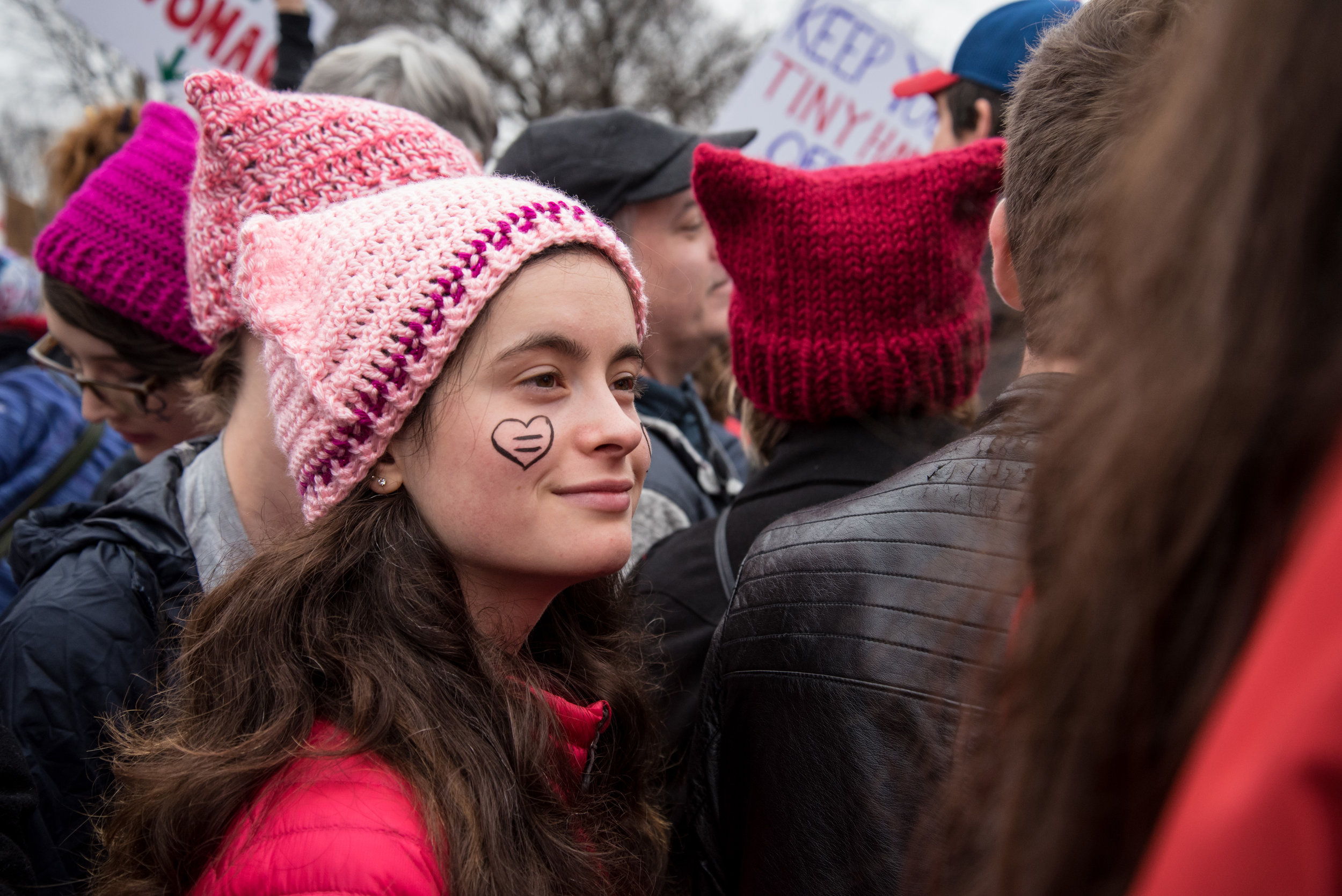
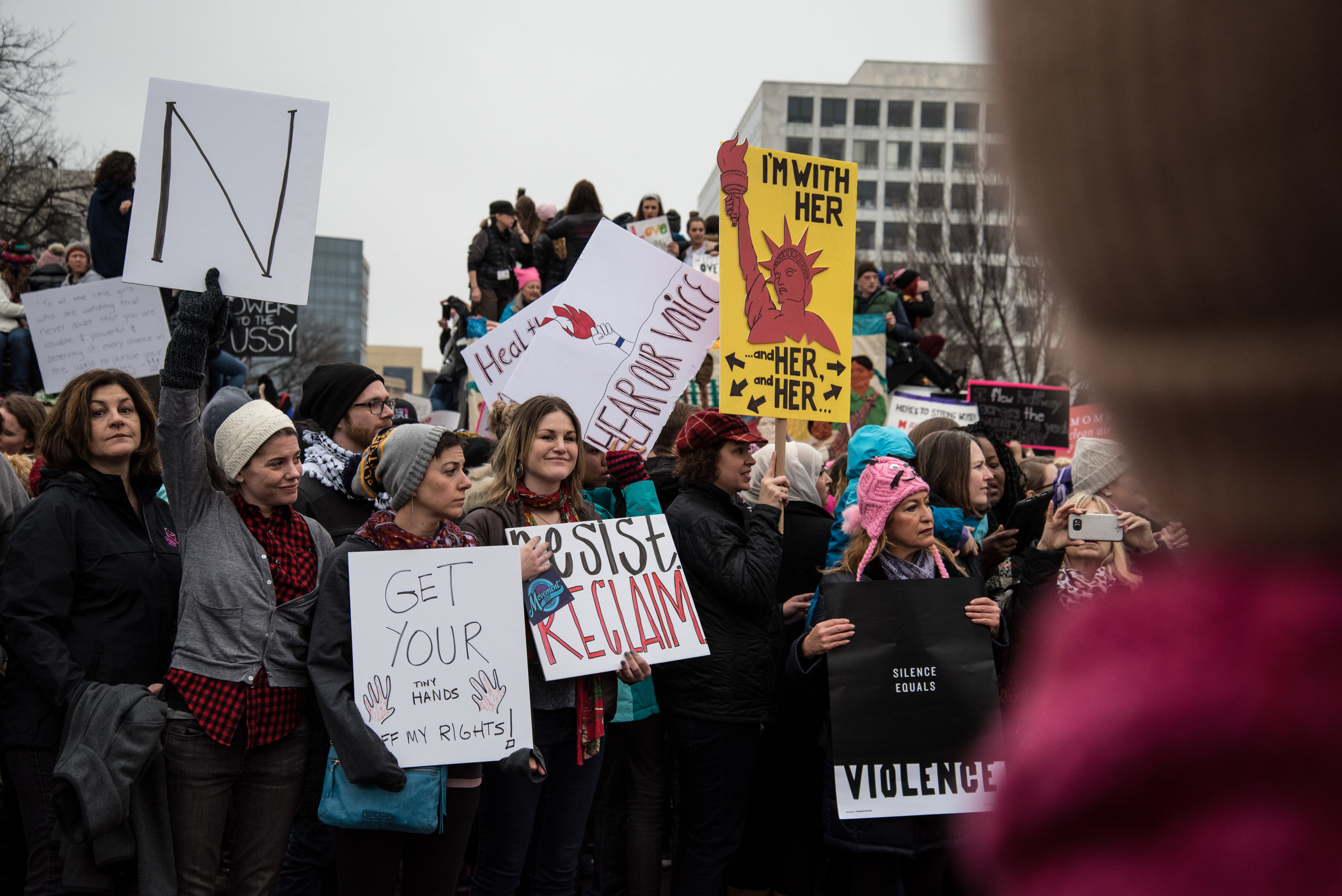
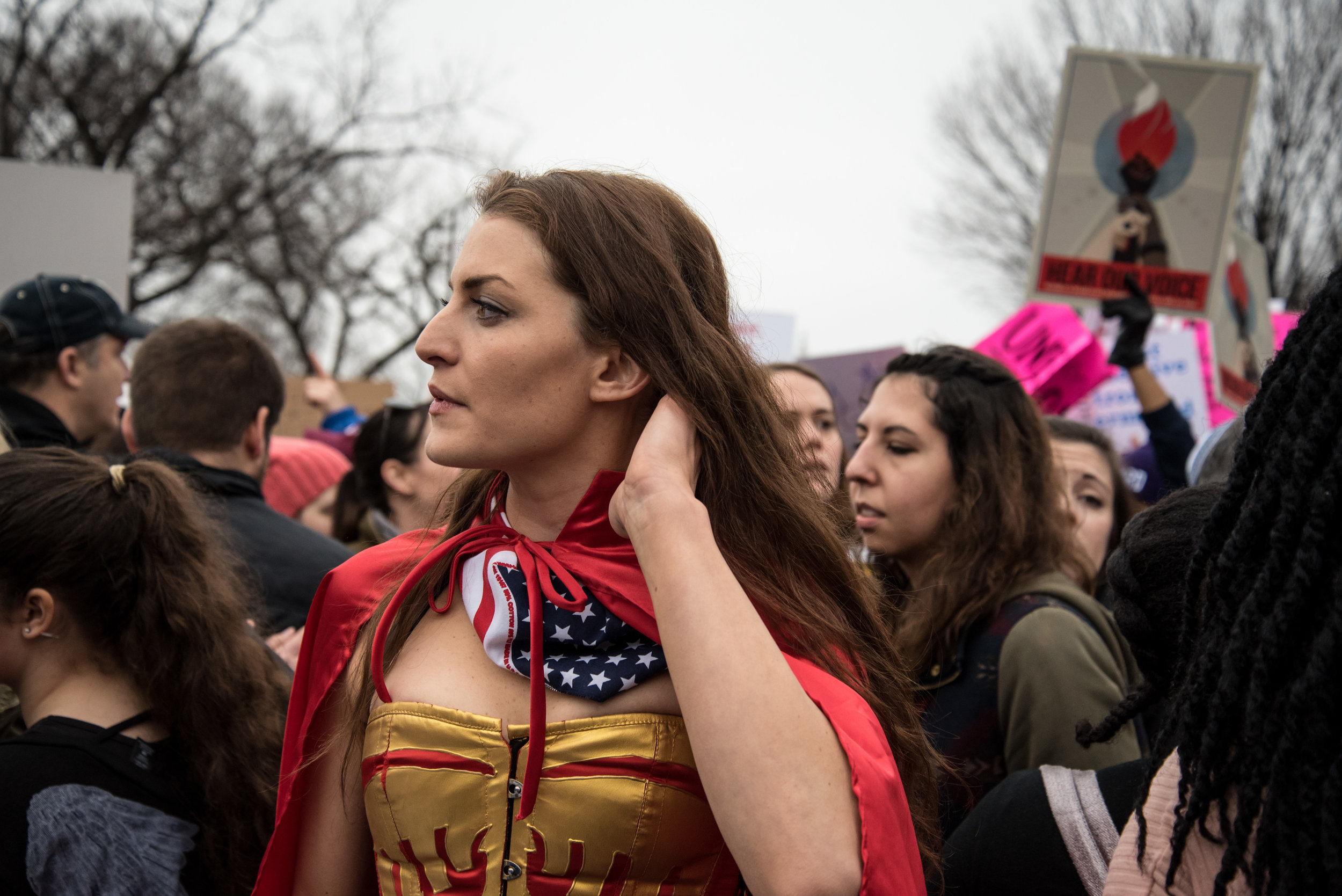
![“A lot of my friends who voted for [Trump] say give him a chance. Well, I’m trying. Try! I want him to try. Just give us some frickin’ effort.” —Anne MacDonald, Greenville, Ohio](https://images.squarespace-cdn.com/content/v1/536c3b94e4b0ad24d25d55f8/1492991167856-XK18SIHN6NYPUDNC0S53/womens-march-4977.jpg)
